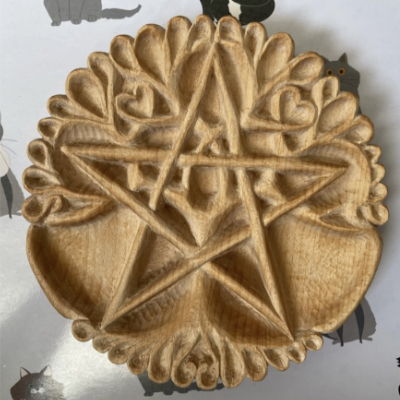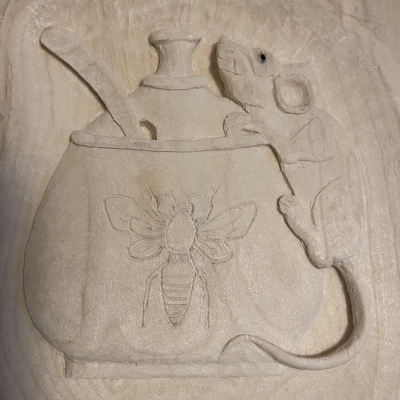Wood carving
I have always enjoyed modelling things whether from clay, wool, fimo or more recently wood.
I love the feel of materials especially wood and after my husband bought me a set of smaller carving tools I really got into whittling and wanted see what I could produce
I quickly learned that you need a completely different mindset in order to carve. Since, unlike other forms of art, where you start with nothing but a handful of wool, a blank sheet of paper, a pile of fabrics, or a lump of clay and then build up from there and if you make a mistake, it's generally quite easy to amend; carving is a subtractive form of art, so you start with a block of wood, ice or marble and have to take material away in order to expose the thing you are hoping to show, and if you remove too much, it's not at all forgiving so often means you have to start everything again with a new block of material which is both costly and highly frustrating so you need to be slow and meticulous in your work.
Whittling
My first attempts were done with just a knife and I made things like a totem for my native american flute and small free standing gifts for friends, I will post a couple of them on here so you can see what I mean.
This is called whittling and is one of the older styles of wood carving. You carefully shave small pieces of wood off the workpiece with a special very sharp carving knife often made specifically for carving. When the work is done you can see the strokes of the knife rather than a smooth and sanded surface.
Aside from the afore mentioned items I have also made a number of wands, spurtles (Porridge stirers) and the occasional owl and more intricate items just using my carving knives.
In the round
Carvings in the round means you take a piece of wood and carve the subject completely three dimensionally.
Any carving in the round is normally designed to stand alone. So everthing needs to be accurately proportioned as your viewer will be able to walk all the way around it to see the piece from every possible angle in order to fully appreciate it. 'David' by Michelangelo is a great example.
Relief carving - a Decorative form of Carving
Relief carving is often described as creating pictures in wood or stone etc. It is a technique where the thing you want to highlight is raised above the background surface, but remains attached to the background, so the carving acts as a decorative embellishment for the thing that it is carved upon. So, for example, relief carvings in wood will often be found on furniture, doors, walls etc.
It was obvious that I would want to move into this area of woodworking, but I didn't realize that at the time. It is easier to achieve a woodcarving in the round than it is to create a carving in relief, as the latter requires you to work with altered perspectives in order to make it look realistic. Yet another technique to get your head around, but all good for keeping your gray matter happy and fully functioning
Plus while you can create smaller items of relief work like my Mandala just with your knives, if you want to do a lot of relief work you need extra tools like chisels and gouges and that means an extra cost for tools and learning how to use them safely and keep them sharp.
My husband is very talented and makes a lot of our furniture. He recently designed and made us a solid wood kitchen, and the plan now is that I will carve memories from our years together and things we both love onto the flat panels on some of the cupboards he made, the small panel on here showing my cat Romeo was a test piece for that idea though it will keep me busy for years to come.


